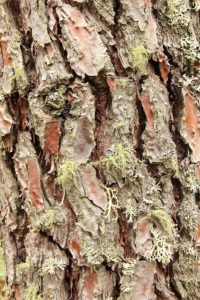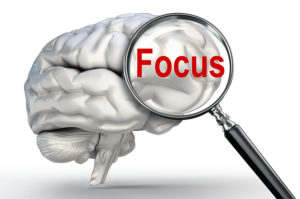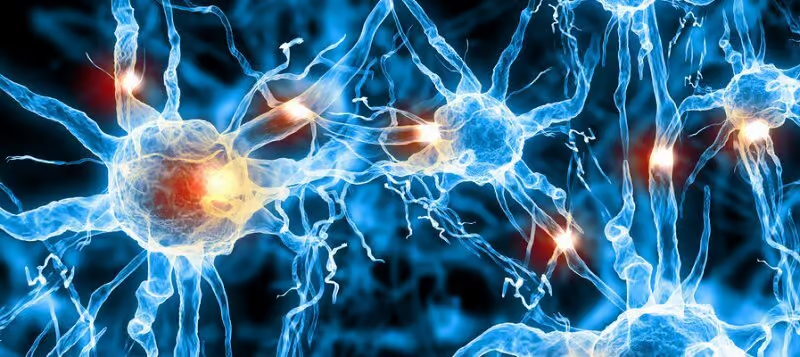Table of Contents

Pine Bark Extract is a standardized extract of French maritime pine bark ((Pinus pinaster). This pine tree is native to the Mediterranean region.
The extract of maritime pine bark called Pycnogenol contains 65 – 75% proanthocyanidins (procyanidins).[i]
Professor Jacques Masquelier of the University of Bordeaux, France was the first to study oligomeric proanthocyanidins (OPCs). The professor got his inspiration from reading about Jacques Cartier’s 1535 expedition up the St. Lawrence River.
Cartier’s crew were trapped in the ice and dying of scurvy. The crew survived after native Iroquois gave them spruce beer brewed from the bark and needles of pines growing by the river.
Prof. Masquelier speculated pine extracts in the brew contained Vitamin C and flavonoids that helped the crew’s recovery.[ii] In 1948, the professor isolated the first OPCs from peanut skins. And patented his extraction method of isolating OPCs from pine bark in 1951.
In 1965, research was begun by Charles Haimoff, the founder of Horphag Research in Berlin. He developed a water-soluble extract of the same French maritime pine tree. Calling his extract Pycnogenol®.
Throughout this review I may refer to Pine Bark Extract as Pycnogenol. Assume I’m talking about the same extract.
As a nootropic, Pine Bark Extract is used primarily to increase cerebral blood flow.
Other uses include using Pine Bark Extract for the prevention of neurodegenerative diseases like Alzheimer’s or Parkinson’s, ADHD, high diastolic and systolic blood pressure, osteoarthritis, chronic pain and erectile dysfunction (ED).
On a molecular level, Pine Bark Extract helps with oxidative stress, membrane damage, DNA damage, inflammation and glycation.
Here we’ll investigate Pine Bark Extract’s value as a nootropic to optimize cognition.
Pine Bark Extract helps:
- Neurotransmitters. Pine Bark Extract helps modulate the activity of catecholamines dopamine, norepinephrine, and epinephrine. And an increase in the GSH-disulphide reductase (GSSG-R) ratio. Neurotransmitter problems which contribute to hyperactivity in ADHD.[iii]
- Cerebral Circulation. Pine Bark Extract helps boost blood flow to and within your brain. By increasing nitric oxide which helps dilate blood vessels. And helping repair and maintain the health of the lining of blood vessels.
- Neurodegenerative Disease. Pine Bark Extracts prevent accumulation of oxidatively damaged proteins. And may reduce the risk of diseases like Parkinson’s, Alzheimer’s, and Huntington’s.[iv]
Overview
Pine Bark Extract (Pinus pinaster) is a unique nootropic supplement derived from the bark of the French maritime pine tree native to the Mediterranean region.
Pycnogenol® is a patented form of Pine Bark Extract which is standardized to 65-75% procyanidins. Oligomeric proanthocyanidins (OPCs) are also found in high concentrations in wide variety of plants. Including apple, pear, grapes, chocolate, wine and tea.
Pine Bark Extract helps protect your brain from:
- DNA damage – Pine Bark Extract helps reduce DNA damage caused by oxidation[v]
- Inflammation – Pine Bark Extract inhibits proinflammatory gene expression.[vi] The type of inflammation implicated in diseases like Alzheimer’s.
- Glycation – Glycation is caused when sugar molecules bond to protein and fat molecules. Triggering oxidation and inflammation. Pine Bark Extract prevents glycation by lowering blood sugar levels.[vii]
- Membrane damage – Damage to neuron membranes disrupt neuronal communication and structure. Pine Bark Extract protects brain cell membranes from free radical damage, chelating heavy metals, restoring membranes, and preventing their rupture and leakage. Helping to prevent stroke.[viii]
- Oxidative stress – Free radicals damage DNA and brain cell membranes by causing inflammation. This inflammation is implicated in neurocognitive disorders like Alzheimer’s and Parkinson’s. Pine Bark Extract reduces free radical production, boosts neuron’s natural antioxidant defense systems, and is a potent free radical scavenger.
Pine Bark Extract can also boost cerebral circulation. Providing the blood flow needed to bring nutrients and oxygen to energy-hungry brain cells. By increasing activity of nitric oxide which dilates blood vessels.[ix]
The active polyphenols called proanthocyanidins in Pine Bark Extract easily cross the blood-brain barrier.
How does Pine Bark Extract Work in the Brain?
Pine Bark Extract boosts brain health and function in several ways. But two in particular stand out.
- Pine Bark Extract boosts cerebral blood flow. Pine Bark Extract’s main active component are water-soluble polyphenols. Including bioflavonoids catechin and taxifolin as well as phenol carbonic acids.
Antioxidants like bioflavonoids enhance blood vessel nitric oxide (NO) synthase expression. Which then releases NO from endothelial cells (blood vessels linings).
It’s a little difficult to measure blood flow in the brain. So researchers conducted a double-blind, randomized, placebo-controlled study using Pycnogenol to study forearm blood flow responses to acetylcholine (ACh).
The study was with healthy young men before and after 2 weeks of 180 mg per day of Pycnogenol, or a placebo. The group of men using Pycnogenol experienced a significant increase in blood flow.
The researchers then introduced an NO synthase inhibitor which completely abolished Pycnogenol-induced increases in blood flow. And concluded that it was definitely Pycnogenol that increased blood flow by boosting nitric oxide production in blood vessels.[x]
- Pine Bark Extract boosts cognition. Neurohackers report that supplementing with Pine Bark Extract or Pycnogenol has a significant effect on memory, focus, decision-making and mood. And researchers verified this with clinical trials.
In this study, 60 participants aged 35-55 volunteered to work with researchers. Diet, alcohol and lifestyle patterns, including exercise, were controlled. Half the group received 50 mg of Pycnogenol 3-times per day for 12 weeks. The other half simply followed a healthy lifestyle.
After 12 weeks of Pycnogenol supplementation, results showed a 16% increase in mood, an 8.9% increase in mental performance, 13.4% increase in sustained attention, and a 30% decrease in oxidative stress.
A 13% increase in attention span may not seem like a big deal. But the National Center for Biotechnology Information reported that the average American’s attention span has reduced from 12 seconds to 8 seconds.[xi]
This decrease in attention span can have a profound effect on productivity and quality of work produced. So supplementing with Pine Bark Extract or Pycnogenol could be the simplest way to dramatically increase your productivity and income. And get that next promotion.
How things go bad
 Poor cerebral blood flow, inflammation and free radicals (oxidative stress) can damage your brain. And one of the ways this manifests is memory loss. Left unchecked, it can develop into serious neurodegenerative diseases like Alzheimer’s and Parkinson’s Disease.
Poor cerebral blood flow, inflammation and free radicals (oxidative stress) can damage your brain. And one of the ways this manifests is memory loss. Left unchecked, it can develop into serious neurodegenerative diseases like Alzheimer’s and Parkinson’s Disease.
↓Cognitive function declines
↓Heavy metals kill brain cells from the inside
↓Free radicals destroy neurons and synapses
↑Anxiety, depression and moodiness increase
↓Attention, concentration, and memory declines
Poor cerebral circulation causes a domino effect in the brain affecting many critical processes. Memory, cognition, and decision-making all suffer as a result.
Pine Bark Extract benefits
Pine Bark Extract and Pycnogenol are Oligomeric proanthocyanidins (OPCs). And OPCs have been extensively researched since the 1940’s.
Professor Jacques Masquelier published his doctoral thesis in 1948 on OPCs, phytochemistry and human health. Masquelier discovered that OPCs could neutralize free radicals which were identified in a number of degenerative conditions and age-associated changes in the body. He found that OPCs were potent antioxidants.
In 1965, Horphag Research of Germany began research on their patented water-soluble Pine Bark Extract called Pycnogenol. More than 450 clinical studies have since been conducted. Showing Pycnogenol benefits for:
- Cognitive functions including memory, mood and ADHD
- Antioxidant & anti-inflammatory properties
- Cardiovascular benefits preventing heart disease and stroke
- Diabetes by controlling blood glucose levels
- Eye health by improving blood flow to tiny capillaries in the eye
- Improved sperm quality and erectile dysfunction
- Menstrual disorders including PMS symptoms
- Joint health including osteoarthritis, mobility, flexibility and chronic pain
- Oral health including gum bleeding and plaque formation
- Respiratory functions like taming asthma and hay fever
- Sports nutrition for energy, recovery, cramps, and better blood flow
- Overall blood vessel health[xii]
Pine Bark Extract and the patented Pycnogenol are powerful, multi-modal defenses against aging, diseases and overall brain health.
How does Pine Bark Extract feel?
Pycnogenol and Pine Bark Extract are one of the most potent antioxidants ever discovered. Many neurohackers report having more energy. And an improved attitude while using this supplement.
The effects of Pine Bark Extract are often not felt immediately. But seem to build over time. For some, you could feel a boost in energy about 6 hours after taking it.
Adding Pine Bark Extract to your stack should have you thinking faster and clearer. You may get more done. And stay focused on things longer until you’re able to finish them.
But chances are you may not ‘feel’ anything at all. Until later you realize that you feel ‘normal’. And find you’re able to recall words and names much more easily. Over the long-haul you may realize you have more stamina and energy. It simply makes you feel good.
Older neurohackers report Pine Bark Extract:
- Reduces age spots, varicose veins and spider veins
- Hair, skin and nails look smoother and take on a healthy glow
- You don’t bruise as easily
- Allergies and sinus issues clear up
- Blood sugar levels return to normal after 2-3 months
- No more hemorrhoids
- Leg, joint and knee pain are reduced
- Runners can go longer without feeling exhausted
- You don’t feel completely burnt out after a workout
- You may be able to lift more weight and not get as sore
Male neurohackers nearly always report more frequent and harder erections. Especially when stacking with L-Arginine. And a higher sperm count. Which is backed by science.[xiii]
Long term users say they consistently feel calmer, can think quicker and have better memory.
Pine Bark Extract Clinical Research
Pine Bark Extract boosts Working Memory
Australian researchers worked with 101 patients (aged 60 – 85 years) in a double-blind, placebo-controlled study. Participants received 150 mg of Pycnogenol daily for 3 months.
The cognitive tasks measured in the study included attention, working memory, episodic memory, and psychomotor performance. The study found statistical evidence that the Pycnogenol-group developed better working memory as a result of using Pycnogenol.[xiv]
Pycnogenol for Improved Cognition
This 12-weeks study was conducted in Italy with 60 professionals aged 35-55 years. Half the group received 150 mg per day of Pycnogenol. And the other half took a placebo.
At 12 weeks the improvement in the Pycnogenol-group was more significant than the controls. Free radicals were reduced by 30.4%. The group showed improvement in spatial memory retention. Alertness, anxiety and contentedness all improved.
The researchers concluded that Pycnogenol improved cognitive function, and mental performance.[xv]
Another study in Italy was done with university students. The objective of the study was to test supplementation with Pycnogenol on cognitive function, attention and mental performance.
53 students (18-27 years) were given Pycnogenol for 8 weeks. Another group of students took a placebo. The study found that the students who used the nootropic experienced better sustained attention, memory, executive function, and mood.
The study concluded that Pycnogenol improves cognitive function in normal students.[xvi]
Pine Bark Extract for ADHD
Several studies have been conducted with Pine Bark Extract and its effects on those with ADHD.
One study in the Slovak Republic gave ADHD children either a placebo or Pycnogenol for one month.
Research has shown that concentrations of catecholamines (dopamine and norepinephrine (NA)) were higher in urine of ADHD patients compared to healthy children.
Higher concentrations of NA correlated with degree of hyperactivity. And both adrenaline and NA concentrations correlated with higher blood levels of oxidized glutathione (GSSH).
Treatment of Pycnogenol with ADHD children decreased dopamine and NA urine concentrations. And increased the GSH/GSSG ratio. Leading to less hyperactivity. And reduced oxidative stress.[xvii]
Another study in Slovakia was conducted with 61 ADHD children. The kids were given 1 mg/kg/day of Pycnogenol for 4 weeks in this randomized, placebo-controlled trial. The children were examined at the beginning of the trail. And tested again one month later.
Results of the study showed those who used Pycnogenol had a significant reduction in hyperactivity, improved attention and visual/motor skills, and better concentration.
The study concluded that Pycnogenol could be used as a natural supplement to relieve ADHD symptoms in children.[xviii]
Pine Bark Extract Dosage
Recommended dosage of Pine Bark Extract containing 95% proanthocyanidins is up to 100 mg 3-times per day. Or 1.4 mg per pound of body weight. So if you’re 200 pounds, your daily dose would be 280 mg.
Higher dosing should be divided equally with your first dose in the morning, next dose at noon and a dose mid-afternoon.
Pine Bark Extract is water-soluble so can be taken with water or mixed in a smoothie.
Pine Bark Extract Side Effects
Side effects for Pine Bark Extract and Pycnogenol are rare when taken in doses from 50 – 450 mg daily. Very rarely will you experience dizziness, stomach problems, headache or mouth ulcers.
Pine Bark Extract can boost your immune system. So if you’re on medication for auto-immune diseases like multiple sclerosis (MS), lupus, rheumatoid arthritis and others. Or taking an immune suppressant for an organ transplant. You should avoid using Pine Bark Extract or Pycnogenol.
High doses of Pine Bark Extract may increase bleeding if you are dealing with a bleeding condition.
Very high doses of Pine Bark Extract may decrease blood sugar too much if you’re dealing with diabetes.
Pine Bark Extract may slow blood clotting. So stop using this nootropic if you’re planning on having surgery or dental work.
And while there is no “scientific evidence”, we have user reports that Pine Bark Extract seems to amplify the effects of alcohol. So caution is advised when using Pine Bark Extract while consuming alcoholic beverages.
Where to buy Pine Bark Extract
The bioactive component of Pine Bark Extract are proanthocyanidins. Pycnogenol is standardized to 65-75% proanthocyanidins. Non-branded Pine Bark Extract is often standardized to 95% proanthocyanidins.
Individual Pine Bark Extract supplements are available as a powder, capsules and tablets. Check the label for the concentration of proanthocyanidins.
Pine Bark Extract can also sometimes be found in some of higher quality pre-formulated nootropic stacks. For example, Mind Lab Pro® contains 11 brain enhancing nootropic compounds including Pine Bark Extract standardized to 95% proanthocyanidins.
I recommend Mind Lab Pro because it addresses all aspects of anxiety resistance, memory and cognitive enhancement, stabilizes mood, brain repair, and maintenance.
This premium nootropic stack is designed to affect neurotransmitters, cognitive energy, brain waves, neuroprotection, and regeneration. See my Mind Lab Pro review for a detailed report.
Nootropics Expert Recommendation
Pine Bark Extract (Pycnogenol) up to 300 mg per day
 I recommend using Pine Bark Extract or Pycnogenol as a nootropic supplement.
I recommend using Pine Bark Extract or Pycnogenol as a nootropic supplement.
Your body does not make Pine Bark Extract on its own. So you must take it as a supplement.
Pine Bark Extract easily crosses the blood-brain barrier and is available within an hour of taking it. Effects are more typically felt within 6 hours of taking it.
Pine Bark Extract is especially helpful for those suffering from brain fog or memory loss. It helps increase cerebral blood flow and brings more oxygen and nutrients to brain cells.
Pine Bark Extract is helpful for those dealing with ADHD. Research shows the extract helps prevent the elimination of dopamine and norepinephrine from your system. Which is a common problem with those dealing with ADHD.
Taken for ADHD symptoms, Pine Bark Extract helps reduce hyperactivity, improves focus and attention, improves memory and puts you in a better mood.
Pine Bark Extract is also helpful for those suffering from Alzheimer’s. It has been shown to boost blood flow to areas of the brain affected by amyloid-β protein aggregation. And even may prevent the proteins from forming.
Pine Bark Extract helps tame inflammation associated with diseases like Alzheimer’s. And studies are now underway to determine if Pine Bark Extract can help prevent Alzheimer’s from taking hold in the first place.
You can safely take up to 450 mg of Pine Bark Extract (95% proanthocyanidins) daily if needed. Half the dose first thing in the morning. And the other half at noon. And your final dose mid-afternoon.
And for memory, Pine Bark Extract is great to stack with most of the racetams. Neurohackers also report good success stacking the extract with Bacopa Monnieri, Lions’ Mane, and Rhodiola Rosea.
You can buy individual Pine Bark Extract supplements. Or you could try my favorite pre-formulated nootropic stack Mind Lab Pro® which includes Pine Bark Extract (standardized to 95% proanthocyanidins).
Mind Lab Pro contains a synergistic blend of 11 brain enhancing nootropics covering all aspects of cognition and brain health. See my full Mind Lab Pro review for more.









Join The Discussion - 163 comments
Steve
June 27, 2020
Hi David, where are you getting the notion that Pycnogenol prevents a decrease of norepinephrine and dopamine? The study you sited states Pycnogenol caused them both to decrease in children with ADHD.
David Tomen
June 27, 2020
Steve, Treatment of Pycnogenol with ADHD children decreased dopamine and NA urine concentrations. Less in the urine means more in the brain. In other words in modulated catecholamines.
Another animal verifies this with an increase in the number of dopaminergic D2 receptors and it restored dopamine release: https://insights.ovid.com/crossref?an=00008877-201009000-00020
Jean-Philippe Raymond
April 8, 2020
Hi David,
I was curious if other Pine had the same level of procyanidins
Found a great article
https://www.ncbi.nlm.nih.gov/pmc/articles/PMC4665433/
The best overall phenolic extraction yield and antioxidant potential was obtained with Picea glauca and Picea mariana
I was curious because this company make a pine bark extract from
Pinus Strobus Canadian white pine (tru-pinebarkextract)
From this article it seams that Picea mariana is less potent than Picea glauca but ultimately (White pine is less potent).
David Tomen
April 23, 2020
Jean-Philippe, interesting study you pointed to. Only thing about Pine Bark Extract is it has decades of research supporting its use. I’m sure other types of pine bark provide benefits too. They just haven’t been studied as much.
Portress Hardy
February 19, 2020
Hello David, do recommend powder over capsules or it doesn’t matter? Also are there any suppliers you might recommend as well?
David Tomen
February 20, 2020
Portress, I prefer powders when I cannot find a supplement that doesn’t contain toxic “other ingredients”.
But if you want a standalone Pine Bark Extract supplement look for a manufacturer who licenses and uses the patented Pycnogenol. Then you’ll know for sure you’re getting the real thing. As long as the manufacturer is trustworthy.
James
November 20, 2019
Why do you prefer pycnogenol to vinpocetine?
David Tomen
November 20, 2019
James, I don’t prefer one over the other. I prefer Vinpocetine if you are just interested in boosting cerebral blood flow. And I prefer Pine Bark Extract if you are looking for all the other cognition boosting benefits of this supplement on top of boosting blood flow.
I use both.
James
November 21, 2019
Thanks,
What dose of vinpocentine do you recommend if you were only interested in boosting cerebral blood flow?
David Tomen
November 21, 2019
James, for cerebral blood flow it’s 10 mg Vinpocetine 3-times per day.
Shelby
November 12, 2019
Hi. 😉
Thanks for all the info and research. I’m looking to treat severe ADHD naturally and so I’m looking to add pine bark. Would a b vitamin complex plus ginkgo be too much with it?
Also I need a cavity filled soon so would a week be enough time on taking a break from everything?
David Tomen
November 12, 2019
Shelby, it’s going to take a lot more than just Pine Bark Extract to treat “severe ADHD naturally”. You need the stack described in this post: https://nootropicsexpert.com/best-nootropics-for-adhd-add/. Which includes a B-Complex supplement.
2-3 days break should be enough to prepare for dental work.
Nero
October 1, 2019
Hi David,
Great site. This site with all that information proves that Nootropics work 😀
I am building an ADHD stack. Is it worth adding Pycnogenol to it? Or, will it be too much dopamine since it already has Tyrosine?
Below is the stack:
1, CoQ10, 2. L-Theanine 3. DHA 4. PS 5. Coconut oil +Multi 6. Prebiotic
7. L-Tyrosine 8. 5-HTP
Thanks!
David Tomen
October 1, 2019
Nero, Pycnogenol is a great addition to your stack because it helps increase blood flow. Which helps deliver more nutrients and oxygen to brain cells. I doubt that it would boost dopamine too much because the ADHD brain typically needs more dopamine. But the only way to find out is to try it.
Nero
October 1, 2019
Great. Thank you.
Nero
October 2, 2019
David,
I don’t want to use 5-Htp, so I had to drop tyrosine. Instead, I went with NADH and SAMe.
1, CoQ10, 2. L-Theanine 3. DHA 4. PS 5. Multi 6. Prebiotic 7. NADH 8. SAMe 9. Pycnogenol
What do you think?
David Tomen
October 3, 2019
Nero, looks good. But no reason to stop with L-Tyrosine unless you bump up your dopamine so much that you need to use something like 5-HTP. If that happens you could use L-Tryptophan instead. It’s safer and will boost serotonin but much more gently.
Nero
October 4, 2019
Ok. Thanks David!
Jayadeva
September 10, 2019
Hello Dávid, congratulations on your work.
I have used your vast material as a research base, it has helped me a lot.
Leveraging the question of our brother Braeden.
Do you think it might work well to associate in addition to Pine Bark 100mg + 10mg 2x Vinpocetine also 120mg Gingko Biloba?
Or do you think Vinpocetine may be more efficient and you don’t need to associate Gingko Biloba?
Thank you very much.
David Tomen
September 11, 2019
Jayadeva, if all you want to do is boost cerebral blood flow then either Vinpocetine or Pine Bark Extract will work. But you can use all three in your stack as well because each provides plenty of other benefits as well.
Braeden
August 3, 2019
I’m curious about the synergistic benefits of taking low-dose vinpocetine and pycnogenol. At normal doses I imagine the blood flow boost will be too much, but what are your thoughts on 10mg of vinpocetine with 50-100mg of pycnogenol in a stack.
David Tomen
August 4, 2019
Braeden, I don’t think you’ll have a problem because your body can only move so much blood even when it’s most efficient. Your dosage suggestion should work well.